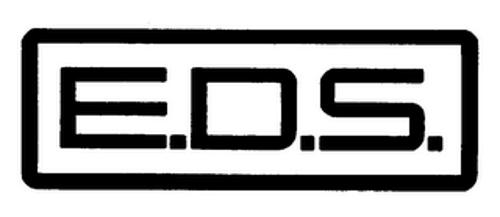 EDS versus EDS. One company that used the EDS mark opposed another company’s registration of the mark EDS. Identical trademarks. Sales to the same customers. But no conflict. How?
EDS versus EDS. One company that used the EDS mark opposed another company’s registration of the mark EDS. Identical trademarks. Sales to the same customers. But no conflict. How?
One reason the marks were not found in conflict was that the goods/services provided by the respective companies were sold in different channels of trade to different purchasers.
Here’s the story.
Electronic Design & Sales, Inc. (“Electronic Design”) filed an application to register the mark E.D.S. for power supplies or battery chargers.
Electronic Data System Corp. (“Electronic Data”) opposed Electronic Design’s trademark application for E.D.S in Electronic Design & Sales, Inc. v. Electronic Data Systems Corp., 954 F.2d 713 (Fed. Cir. 1992). Electronic Data used the mark EDS for the sale of computer programming and installation services. But, both companies sold to some of the same large companies.
Different Channels of Trade and Purchasers
If a conflict (a.k.a. “a likelihood of confusion”) between marks exists, it must be based on the confusion of some “relevant person;” i.e., a customer or purchaser.
Both companies sold to General Motors and Sears. But simply selling to the same large companies was not enough. Individual departments in larger companies may be independent in their purchasing activities.
The court stated: “There is no evidence here, for example, that those computer specialists in the administrative departments at General Motors responsible for purchasing computer services are also responsible for purchasing battery chargers for the auto parts and services departments.”
The overlap in medical sales was even more of a stretch. Electronic Data supplied data processing services for medical insurers. Electronic Design sold batteries and power supplies to makers of medical equipment such as bedside alert systems and crib monitors.
The court noted that Electronic Data “offers no reason to infer, for example, that Blue Cross officials responsible for purchasing its computer services might decide to discontinue purchasing from opposer because of confusion by a secretary in a physician’s office who mistakenly attributes the malfunction [of Electronic Design devises] to [Electronic Data], even though the secretary will process patients’ claims to Blue Cross.”
The medical secretary is not the “relevant person” for trademark conflict purposes. It is not always enough to look at common corporate customers as a whole, you must look at the purchaser within the corporation to identify an overlap.
For commercially sold items, users of the Electronic Design devices would only be “relevant persons” if those users could influence future purchases. And evidence of that was lacking in this case.
As a result the court found that “although the two parties conduct business not only in the same fields but also with some of the same companies, the mere purchase of the goods and services of both parties by the same institution does not, by itself, establish similarity of trade channels or overlap of customers.”
Responding to Trademark Cease and Desist Letter
When considering whether marks are in conflict, you should consider the channels of trade in which the products/services are marketed and sold.
If the channels of trade are sufficiently different and the the relevant persons (e.g. purchasers) are not likely to encounter the plaintiff’s mark and your mark , then the marks might not be found in conflict.
Sales to the same large corporations alone is not enough. The relevant overlap is whether the same purchasers (or possibly users that can influence purchasers) will encounter both the plaintiff’s mark and your mark.
Therefore, marketing and sales in different places to different groups of purchasers can be one factor in your favor in defending against claims of trademark infringement.
Another factor supporting no conflict conclusion in this case was that the purchasers of both companies goods were sophisticated. I will cover this topic in a future post.
See other posts in this How to Respond to a Trademark Cease and Desist series: